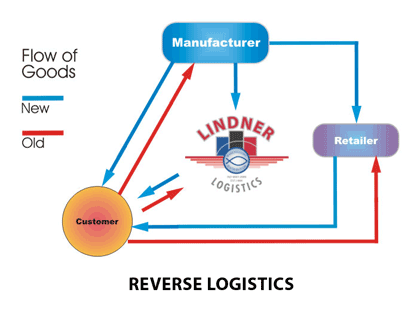Business Logistics
 Product Recall
Product Recall
Contingency planning for product recall involves nearly every function within a business. Logisticians become involved in product recall in three ways, a task force committee for recall, tracing the product and designing the reverse logistics channel.
Establish a task committee
- To pull the product back toward the manufacturer
- Also responsible for stopping production, starting recall action and carry out the necessary steps to comply with appropriate regulatory agencies.
- Cannot be easily located within the distribution system can be very expensive operation and unnecessary.
Tracing method using warranty card information
 It is confined to those products that use such cards, not all cards returned by customer.
It is confined to those products that use such cards, not all cards returned by customer.  One electronics equipment retailer requires all customers to fill out an identification card at the point of sale.
One electronics equipment retailer requires all customers to fill out an identification card at the point of sale.
Reverse Logistics
- Depend on the nature of the products defect and how the company plans to handle it
- A portion of the distribution channel may be used.
- Many small appliances and electronic goods are returned to the factory or regional service centers for repair or replacement.
- The logisticians should be aware of the variety of channel designs available and should not necessarily confine recalled products to the existing distribution channel.
 Service Breakdown
Service Breakdown
- No logistics operating system will run perfectly all of the time.
- None of this situations really require contingency plan since they are a normal part of business activity:
- Delayed purchase order.
- Handling seasonal ordering peak loads.
- Having redundant equipment to meet breakdown.
- The nature of event to indicate when contingency planning should undertaken:
- The probability of occurrence is considered lower than for events included in the regular process.
- The actual occurrence of such an event would cause serious damage, especially if not dealt quickly.
- It deals with subject about which the company can plan ahead to deal with swiftly if the event occurs.
 Modelling the Sales-Service Relationship
Modelling the Sales-Service Relationship
- Involves establishing two points on the diminishing return portion of the sales-service relationship through which a straight line can be drawn.
- Involves setting logistics customer service at high level for a particular product and observed the sales that can be drawn.
- Then the level is reduced to low level and sales are again noted.
Before-After Experiments
- These types are subject to the same methodology problems as the two points method.
- These experiments may be easier to implement because the current service level serves as the before data point. Only the "after" data point is then needed.
Game Playing
- One approach is to set up a laboratory simulation, or gaming situation, participants make their decisions within a controlled environment.
- The environment attempts to replicate the elements of demand uncertainty, competition, logistics strategy, and others that relevant to the situations.
- Extensive data can be obtained to generate a sales-service curve.
Buyer Surveys
- Mail questionnaire and personal interview frequently used because a large sample of information can be obtained at relatively low cost.
- Some questions are designed to determine how buyers would change their patronage or purchase level among supplier if customer service changed.
- The questions must be carefully designed so as not to lead the respondents or to bias their answers and yet capture the essance of service that the buyers find important.
Subscribe to:
Posts (Atom)



